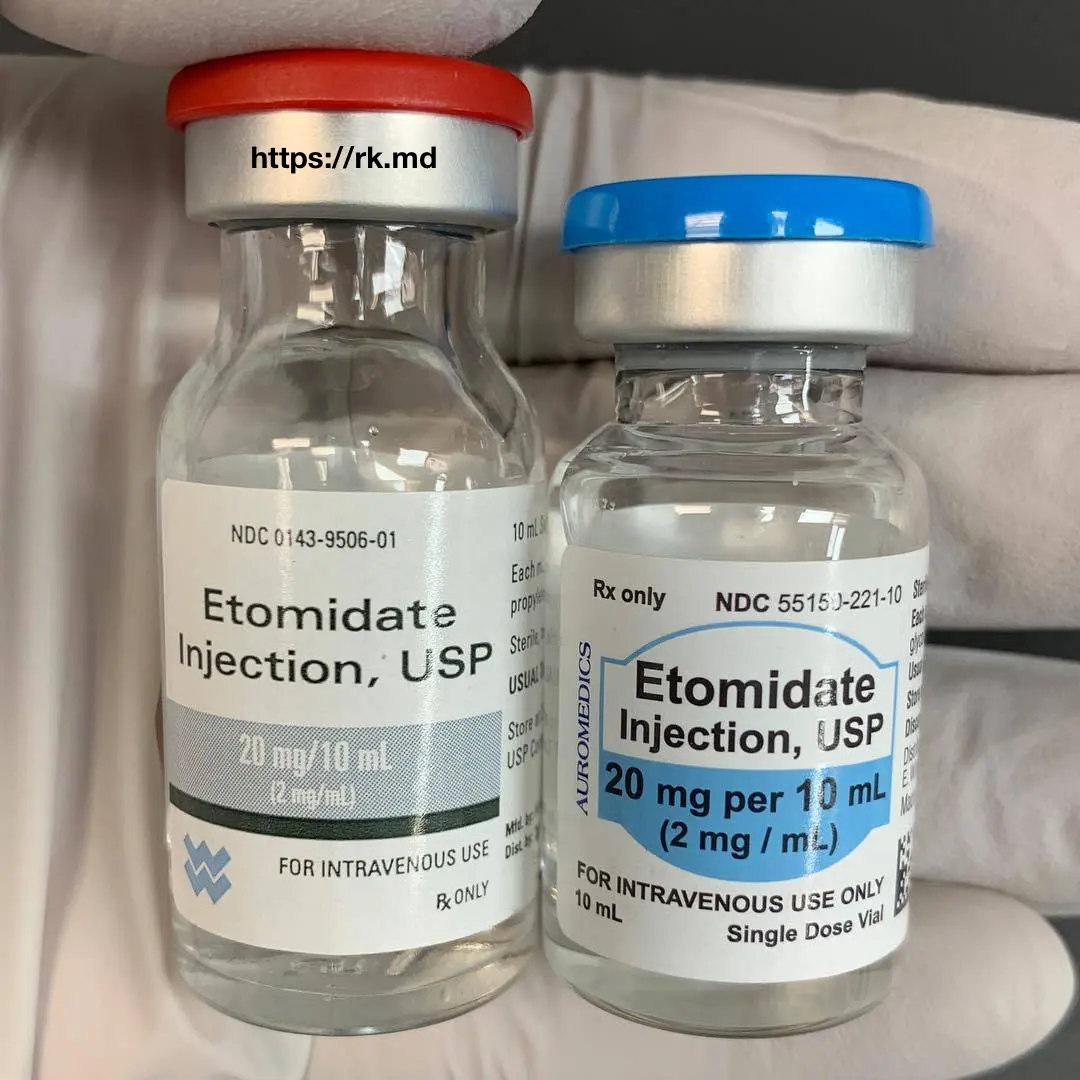Etomidate (Amidate) is an intravenous hypnotic agent most commonly used as an induction agent for general anesthesia. Similar to propofol, it works by potentiating GABA, one of the primary inhibitory neurotransmitters in the central nervous system, to hyperpolarize post-synaptic neurons. From a molecular standpoint, etomidate has more in common with midazolam (Versed) than the other hypnotics due to an imidazole ring which “closes” and enhances lipid solubility in its propylene glycol formulation (the reason why etomidate “burns” on injection).
Of the conventional hypnotics, etomidate is most often touted as “being the most stable” from a cardiovascular standpoint. Unfortunately, it can cause myoclonus (imbalance of neuronal signals in the thalamocortical tract), activation of seizure foci, an increase in somatosensory evoked potentials (SSEPs), nausea/vomiting, and primary ADRENAL SUPPRESSION due to its inhibition of 11-beta-hydroxylase. This adrenocortical dysfunction is why we don’t use infusions of etomidate for sedation in the ICU (mortality rates increased).
As a cardiothoracic anesthesiologist and intensivist, one would think etomidate would be my induction drug of choice for hemodynamically labile patients in the OR and ICU; however, these are also the patients who need their endogenous production of steroids! In my opinion, propofol is just a much more predictable medication with more favorable side effect profile. Many equate rapid sequence inductions (RSI) with etomidate + succinylcholine, but for me, it has always been propofol + succinylcholine/rocuronium + hemodynamic meds (calcium, phenylephrine, esmolol, etc).
Drop me a comment below with your thoughts and questions! 🙂






